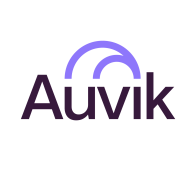

Splunk Observability Cloud and Auvik Network Management compete in the fields of observability and network management, respectively. Splunk has the upper hand in data integration and application monitoring, whereas Auvik shines in network visibility and control.
Features: Splunk offers rapid data integration, customizable dashboards, and comprehensive monitoring capabilities, which are essential for managing complex IT infrastructures. Auvik provides automated device discovery, visual network mapping, and real-time monitoring, offering significant insights into network topology and device tracking.
Room for Improvement: Splunk users suggest improvements in integration options, user interface, pricing models, and log navigation. Enhancements in machine learning and automation features are also desired. Auvik could improve the customization of network maps, reporting systems, integration with third-party tools, and dashboard clarity.
Ease of Deployment and Customer Service: Both Splunk and Auvik provide cloud and hybrid deployment models. While Splunk receives mixed reviews for customer support due to variable experiences, Auvik is praised for its straightforward deployment and reliable customer service, although some recommend improvements in the onboarding process.
Pricing and ROI: Splunk's data ingestion-based pricing is often seen as costly, but results in good ROI through enhanced visibility and operational efficiency. Auvik employs a device-based pricing model, which is cost-effective for smaller deployments but can escalate with increased device counts; nonetheless, it is praised for delivering strong ROI by improving network management efficiencies.
Auvik Network Management has definitely helped reduce business disruptions related to network issues.
Auvik Network Management saves me 40% to 50% of our time.
If the network goes down, Auvik Network Management (ANM) opens a ticket, and then we begin working on it.
Using Splunk has saved my organization about 30% of our budget compared to using multiple different monitoring products.
Anyone working in front-end management should recognize the market price to see the true value of end-user monitoring.
I have definitely seen a return on investment with Splunk Observability Cloud, particularly through how fast it has grown and how comfortable other teams are in relying on its outputs for monitoring and observability.
They were knowledgeable and responded quickly with accurate and useful information.
They introduced the product to us and explained how to deal with it.
I would give Auvik Network Management support a ten out of ten.
On a scale of 1 to 10, the customer service and technical support deserve a 10.
They have consistently helped us resolve any issues we've encountered.
They often require multiple questions, with five or six emails to get a response.
The platform scales well and supports our organizational needs.
It was capable of handling all those clients perfectly.
We keep adding sites into Auvik Network Management, and it doesn't seem to affect performance or anything on our end.
We've used the solution across more than 250 people, including engineers.
As we are a growing company transitioning all our applications to the cloud, and with the increasing number of cloud-native applications, Splunk Observability Cloud will help us achieve digital resiliency and reduce our mean time to resolution.
I would rate its scalability a nine out of ten.
A lot of platforms, especially when it comes to CRMs, CMSs, and ERPs, are still built on PHP and MySQL, which I feel is archaic now and slow to query.
In terms of stability, I would rate Auvik Network Management as a ten out of ten, as it does not experience jitter or other major issues.
Auvik's automated reporting system also details interferences or any lagging other than outside interference from electrical sources.
I would rate its stability a nine out of ten.
We rarely have problems accessing the dashboard or the page.
Unlike NetScout or regular agents for APM, RUM has many problems during the POC phase because customer environments vary widely.
We were unable to integrate Auvik with a geographical map, which limited our ability to track issues to specific buildings on campus.
Enhancements in API functionality and wider tool support for integration with PSA or RMM tools.
Auvik does a good job of nesting those devices. For example, a bunch of different servers will all be nested in one icon on the map, and when opened up, all those multiple servers can be seen.
The out-of-the-box customizable dashboards in Splunk Observability Cloud are very effective in showcasing IT performance to business leaders.
The next release of Splunk Observability Cloud should include a feature that makes it so that when looking at charts and dashboards, and also looking at one environment regardless of the product feature that you're in, APM, infrastructure, RUM, the environment that is chosen in the first location when you sign into Splunk Observability Cloud needs to stay persistent all the way through.
There is room for improvement in the alerting system, which is complicated and has less documentation available.
Auvik is pricey, and we were paying a lot for it, especially when compared to SolarWinds.
The pricing for Auvik Network Management (ANM) is great; it is comparable to other solutions, and for what it does, it actually provides more value for the money than some of the other major competitors.
Auvik Network Management (ANM) pricing or licensing is about 2,500 per year for approximately 4,000 endpoints, which is quite reasonable.
Splunk is a bit expensive since it charges based on the indexing rate of data.
It is expensive, especially when there are other vendors that offer something similar for much cheaper.
It appears to be expensive compared to competitors.
Auvik Core's ease of use also enhanced troubleshooting speed and efficiency.
Its proactive monitoring and simplified troubleshooting have significantly impacted our efficiency in handling network management tasks.
We can go to different places and monitor, check, configure, and analyze traffic.
Splunk provides advanced notifications of roadblocks in the application, which helps us to improve and avoid impacts during high-volume days.
For troubleshooting, we can detect problems in seconds, which is particularly helpful for digital teams.
It offers unified visibility for logs, metrics, and traces.
| Product | Market Share (%) |
|---|---|
| Auvik Network Management (ANM) | 1.1% |
| Splunk Observability Cloud | 1.2% |
| Other | 97.7% |


| Company Size | Count |
|---|---|
| Small Business | 140 |
| Midsize Enterprise | 31 |
| Large Enterprise | 21 |
| Company Size | Count |
|---|---|
| Small Business | 20 |
| Midsize Enterprise | 10 |
| Large Enterprise | 43 |
Auvik Network Management provides comprehensive network monitoring with competitive pricing, offering advanced features and free management of non-critical devices.
Auvik Network Management is known for its intuitive interface and real-time network visibility. Users benefit from features like automated network discovery, mapping, alerting, and TrafficInsights for cost-effective bandwidth monitoring. Its integration with ConnectWise and ticketing systems enhances device inventory updates, SNMP monitoring, and network troubleshooting. However, improvements are needed in reporting, integration capabilities, network map accuracy, customization, and alert configuration. Users suggest expanding device support and improving navigation and monitoring features.
What are Auvik's most important features?Auvik Network Management is widely used by managed service providers and enterprises for network monitoring across industries. It enables efficient management of firewalls, switches, routers, and ensures connectivity over multiple locations. This solution aids in identifying issues, automating backups, and facilitating remote access, offering critical insights on network traffic and device performance. Companies leverage its features to enhance network management and performance.
Splunk Observability Cloud offers sophisticated log searching, data integration, and customizable dashboards. With rapid deployment and ease of use, this cloud service enhances monitoring capabilities across IT infrastructures for comprehensive end-to-end visibility.
Focused on enhancing performance management and security, Splunk Observability Cloud supports environments through its data visualization and analysis tools. Users appreciate its robust application performance monitoring and troubleshooting insights. However, improvements in integrations, interface customization, scalability, and automation are needed. Users find value in its capabilities for infrastructure and network monitoring, as well as log analytics, albeit cost considerations and better documentation are desired. Enhancements in real-time monitoring and network protection are also noted as areas for development.
What are the key features?In industries, Splunk Observability Cloud is implemented for security management by analyzing logs from detection systems, offering real-time alerts and troubleshooting for cloud-native applications. It is leveraged for machine data analysis, improving infrastructure visibility and supporting network and application performance management efforts.
We monitor all Network Monitoring Software reviews to prevent fraudulent reviews and keep review quality high. We do not post reviews by company employees or direct competitors. We validate each review for authenticity via cross-reference with LinkedIn, and personal follow-up with the reviewer when necessary.